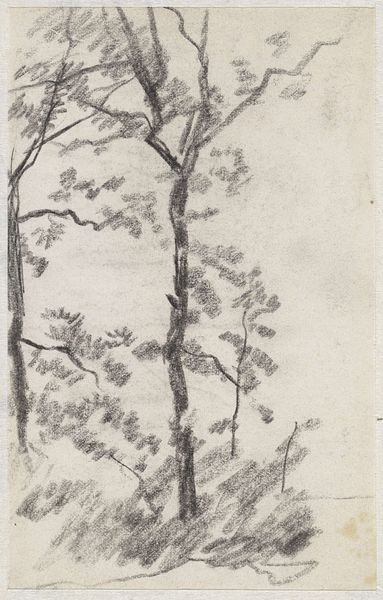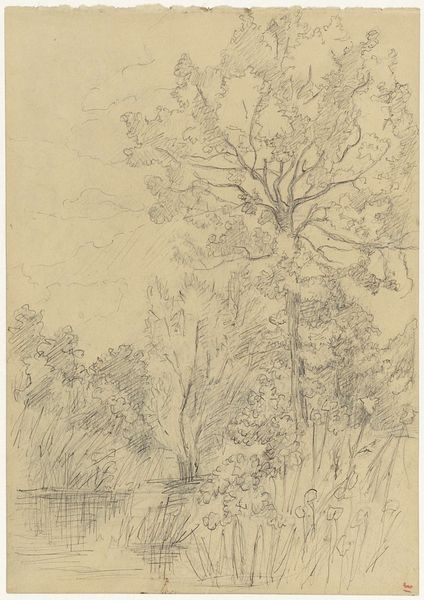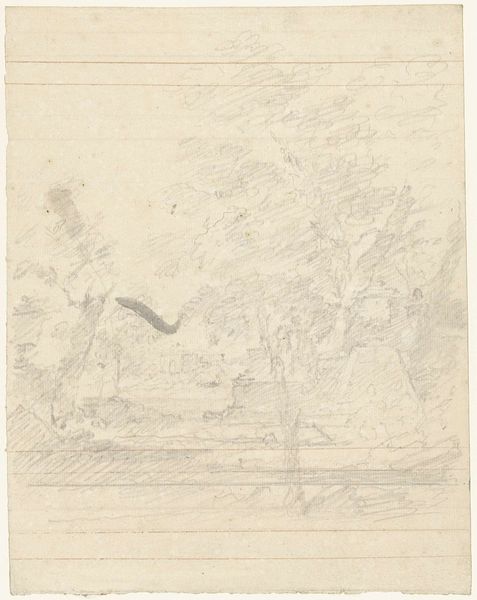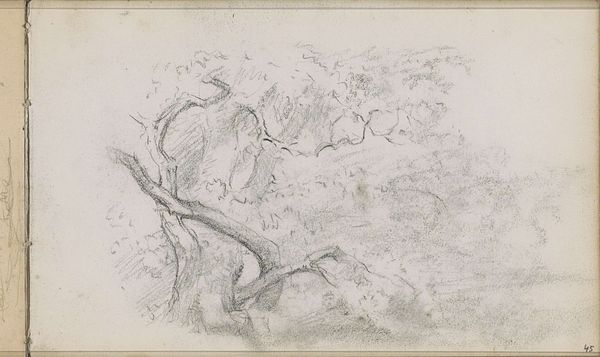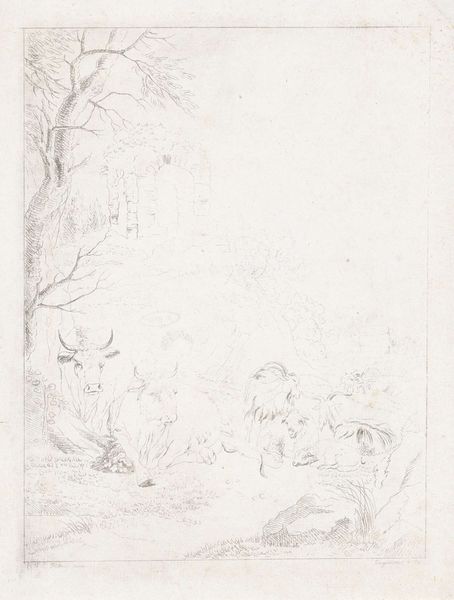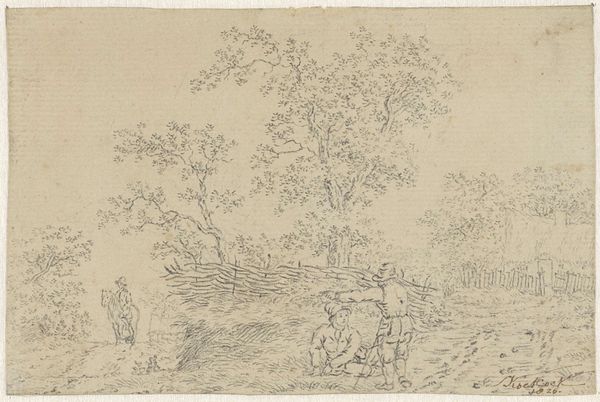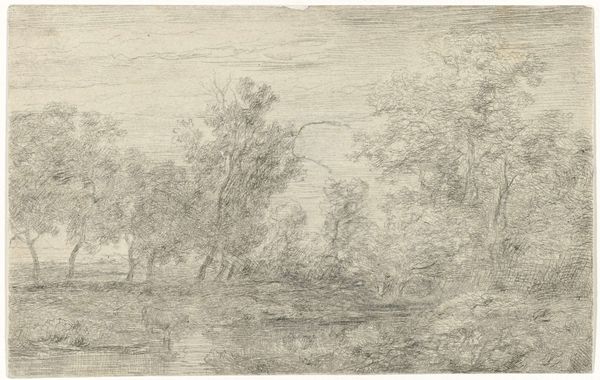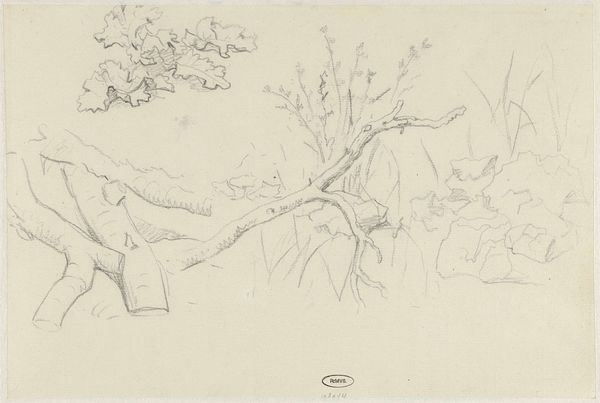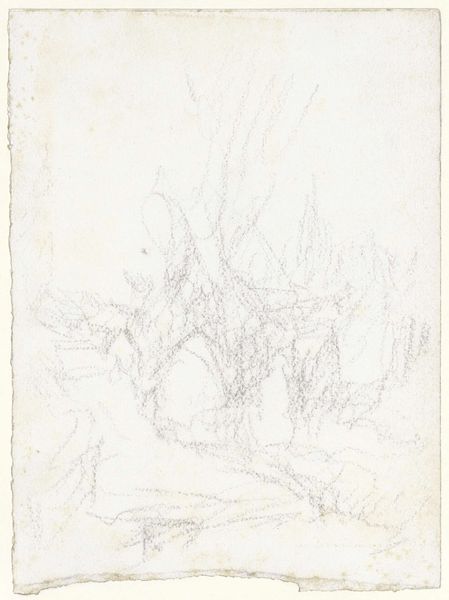
drawing, pencil
#
drawing
#
pencil sketch
#
landscape
#
pencil
#
genre-painting
#
realism
Dimensions: height 194 mm, width 137 mm
Copyright: Rijks Museum: Open Domain
Curator: Welcome. We are standing before Hermanus Fock's "Landschap met veehoeder," or "Landscape with Cattle Herder," a pencil drawing dating from 1781 to 1822. Editor: Well, hello there, whisper of a world. It's faint, ethereal, almost like a half-remembered dream glimpsed through a haze of morning fog. Curator: Precisely. The subtle gradations in pencil work showcase the artist's manipulation of light and shadow. Notice the composition; how Fock guides our eye from the open, undefined space on the left toward the clustered forms of the animals and the herder on the right. Editor: The composition is less a firm hand guiding, more like the wind playing with clouds, right? The landscape isn't shouting a statement; it's murmuring secrets. I like that vagueness, the way the elements seem to dissolve into each other. Curator: The Realism evident in the drawing emphasizes an objective representation of the pastoral scene. Fock meticulously renders the texture of the foliage, the soft curves of the grazing cattle... Editor: Meticulous, yes, but without losing that breathy, dreamlike quality. Look closely, and it feels less about cows standing around and more like a feeling. Melancholy, maybe? Peaceful. That kind of rustic calm only a countryside knows how to bake. Curator: An astute observation. This work sits at the intersection of genre painting and landscape art, blending human presence and natural surroundings, thus prompting reflection on rural life. The drawing as a medium further reinforces the quiet, unassuming tone. Editor: It's funny how something so muted can speak so loudly about the simple poetry of living close to the land. I think Fock knew the trick about leaving room for silence on the page. Curator: It’s in these silences that art finds some of its most powerful expressions. The structure isn’t always just in the lines we see, but in the spaces between them. Editor: True enough. In the end, what stays with me is the way Fock transformed a basic scene into an invitation to wander into a different state of mind.
Comments
No comments
Be the first to comment and join the conversation on the ultimate creative platform.

